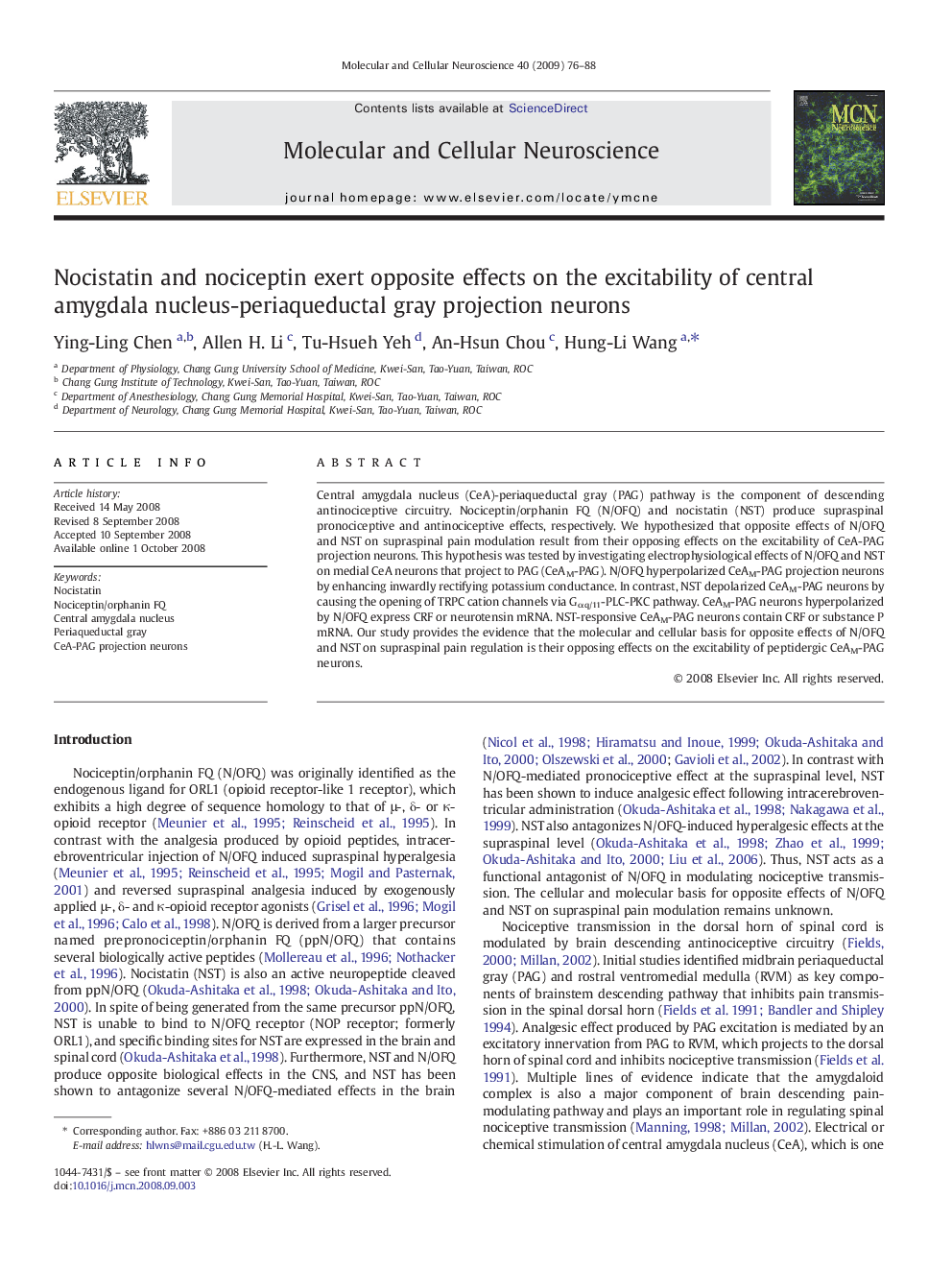| Article ID | Journal | Published Year | Pages | File Type |
|---|---|---|---|---|
| 2198955 | Molecular and Cellular Neuroscience | 2009 | 13 Pages |
Central amygdala nucleus (CeA)-periaqueductal gray (PAG) pathway is the component of descending antinociceptive circuitry. Nociceptin/orphanin FQ (N/OFQ) and nocistatin (NST) produce supraspinal pronociceptive and antinociceptive effects, respectively. We hypothesized that opposite effects of N/OFQ and NST on supraspinal pain modulation result from their opposing effects on the excitability of CeA-PAG projection neurons. This hypothesis was tested by investigating electrophysiological effects of N/OFQ and NST on medial CeA neurons that project to PAG (CeAM-PAG). N/OFQ hyperpolarized CeAM-PAG projection neurons by enhancing inwardly rectifying potassium conductance. In contrast, NST depolarized CeAM-PAG neurons by causing the opening of TRPC cation channels via Gαq/11-PLC-PKC pathway. CeAM-PAG neurons hyperpolarized by N/OFQ express CRF or neurotensin mRNA. NST-responsive CeAM-PAG neurons contain CRF or substance P mRNA. Our study provides the evidence that the molecular and cellular basis for opposite effects of N/OFQ and NST on supraspinal pain regulation is their opposing effects on the excitability of peptidergic CeAM-PAG neurons.
